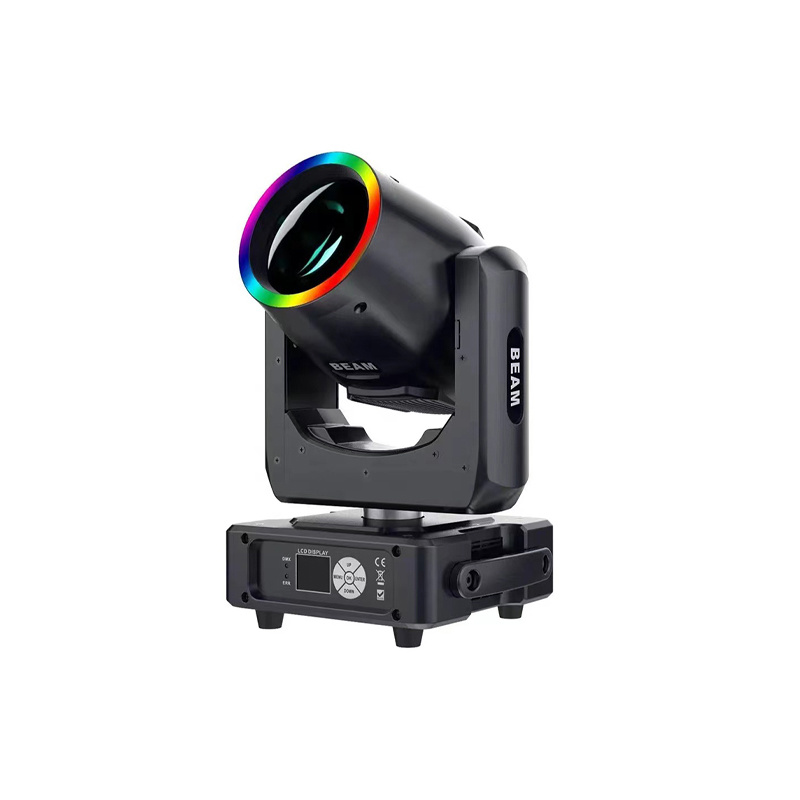Light the Beam: Master Focused Stage Lighting Effects
Classification:
summary description]
Introduction
In the world of stage lighting, the phrase “light the beam” isn’t just a technical command—it’s a creative decision that sets the tone for an entire performance. When executed well, it brings moments into sharp focus, transforming ordinary scenes into unforgettable visuals. Whether you're lighting a concert, a theater production, or a dance floor, mastering the beam can redefine how your audience experiences the show.
What Does It Mean to “Light the Beam”?
At its core, “lighting the beam” means activating a specific kind of lighting instrument—usually a beam light—to project a concentrated shaft of light. These aren’t your average stage lights. They slice through haze and darkness, carving defined paths in the air that command attention. For lighting designers, it’s a tool. For audiences, it’s a visual trigger for excitement or drama.
Why Beam Lighting Matters More Than Ever
Lighting isn’t just about visibility—it’s storytelling. Beam lights contribute in ways that other lighting types can’t:
- They’re bold. Their intensity creates moments that linger.
- They reach far. Ideal for stadiums, arenas, and outdoor setups.
- They shape mood. A single beam can add tension, mystery, or movement depending on how it’s used.
And today, where audiences are more visually attuned than ever, creating those immersive, high-impact scenes isn’t optional—it’s expected.
Where Beam Lighting Makes the Biggest Impact
Let’s explore some of the key spaces where lighting the beam can truly shine.
1. Concerts & Music Festivals
Think back to the last live concert you attended. Remember that moment just before the drop—when the lights went dark, the crowd held their breath, and then… a burst of white light sliced through the air? That’s the beam at work. It’s about rhythm and timing. When synchronized with sound, beam lighting creates a visual pulse that amplifies the music.
2. Theater & Dance
In more intimate or narrative-driven performances, beam lights help isolate moments. A tightly focused beam can highlight a monologue or a duet with precision, separating performers from the background and adding emotional weight without extra scenery.
3. Nightclubs & DJ Events
Here, it’s all about energy. Beam lights, especially moving heads, add intensity to fast-paced environments. When programmed correctly, they feel almost alive—moving, reacting, shifting in time with every beat.
4. Weddings & Private Events
Even outside of typical performance spaces, beams are making appearances. Want to highlight a first dance or grand entrance? Lighting the beam adds elegance and drama that uplighting alone can’t achieve.
Techniques for Lighting the Beam Like a Pro
Effective beam lighting isn’t about flooding the space with brightness. It’s about intention. Here’s how to get it right:
Choose the Right Fixture
- Moving Head Beams: The go-to for most live productions due to their mobility and precision.
- LED Beam Lights: Energy-saving and capable of stunning color transitions.
- Laser Beams: Ultra-sharp, perfect for futuristic or high-tech aesthetics.
Use Control Wisely
Programming is where beam lights truly come alive. Use DMX512 or advanced lighting software to choreograph movements, fades, strobing, and more. The right cue at the right time can turn a simple lighting moment into a dramatic highlight.
Think About Angles
Don’t just point and shoot. Consider where your beam starts, where it ends, and what journey it takes. Angles matter. A beam from above feels commanding; from below, it feels ethereal or ominous. Side angles add momentum and texture.
Blend, Don’t Isolate
Beam lights shine brightest (figuratively) when integrated with other lighting elements, like washes, backlights, or ambient color fills. Think of them as accents in a broader lighting composition.
Beyond the Beam: Innovation Meets Tradition
The core idea of beam lighting hasn’t changed. What’s evolved is how we use it. Today’s lighting designers combine beam effects with real-time triggers, interactive installations, and kinetic systems. Whether you're controlling a dozen fixtures or a hundred, beam lights remain an essential ingredient in modern show design.
Recent advances include:
- Auto-focus beam heads that adjust in real time
- Expanded zoom ranges for tighter or broader output
- Wireless DMX compatibility, making setup cleaner and faster
As these tools grow smarter, the creative possibilities only expand.
Conclusion: Don’t Just Light the Stage—Light the Beam
Every lighting rig can produce brightness. But not every design creates impact. When you light the beam, you're doing more than flipping a switch—you’re crafting a moment, drawing attention, and guiding emotion. That’s the power of beam lighting. Use it with precision, and your show won’t just be seen. It’ll be remembered.
Frequently Asked Questions
1. What kind of light fixture produces the best beam effect?
Moving head beam lights are the most versatile, but laser beams and high-powered LEDs offer unique visual advantages too.
2. Is haze necessary for beam lighting to be effective?
Yes, haze (not smoke) makes the beam’s path visible. Without it, the light will appear only at its destination, not along its travel path.
3. Can beam lighting be used in outdoor events?
Absolutely. Just ensure your fixtures are weather-resistant and have long throw distances.
4. How do I program beam lights to music?
Use DMX controllers or compatible software to sync light cues with musical beats or transitions. Many systems allow sound-to-light functions or MIDI integrations.
5. Are beam lights safe for small indoor venues?
Yes, but avoid aiming directly into the audience’s eyes, especially at close range. Use appropriate tilt angles and dimming settings for tight spaces.
More Cases



